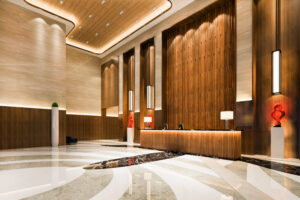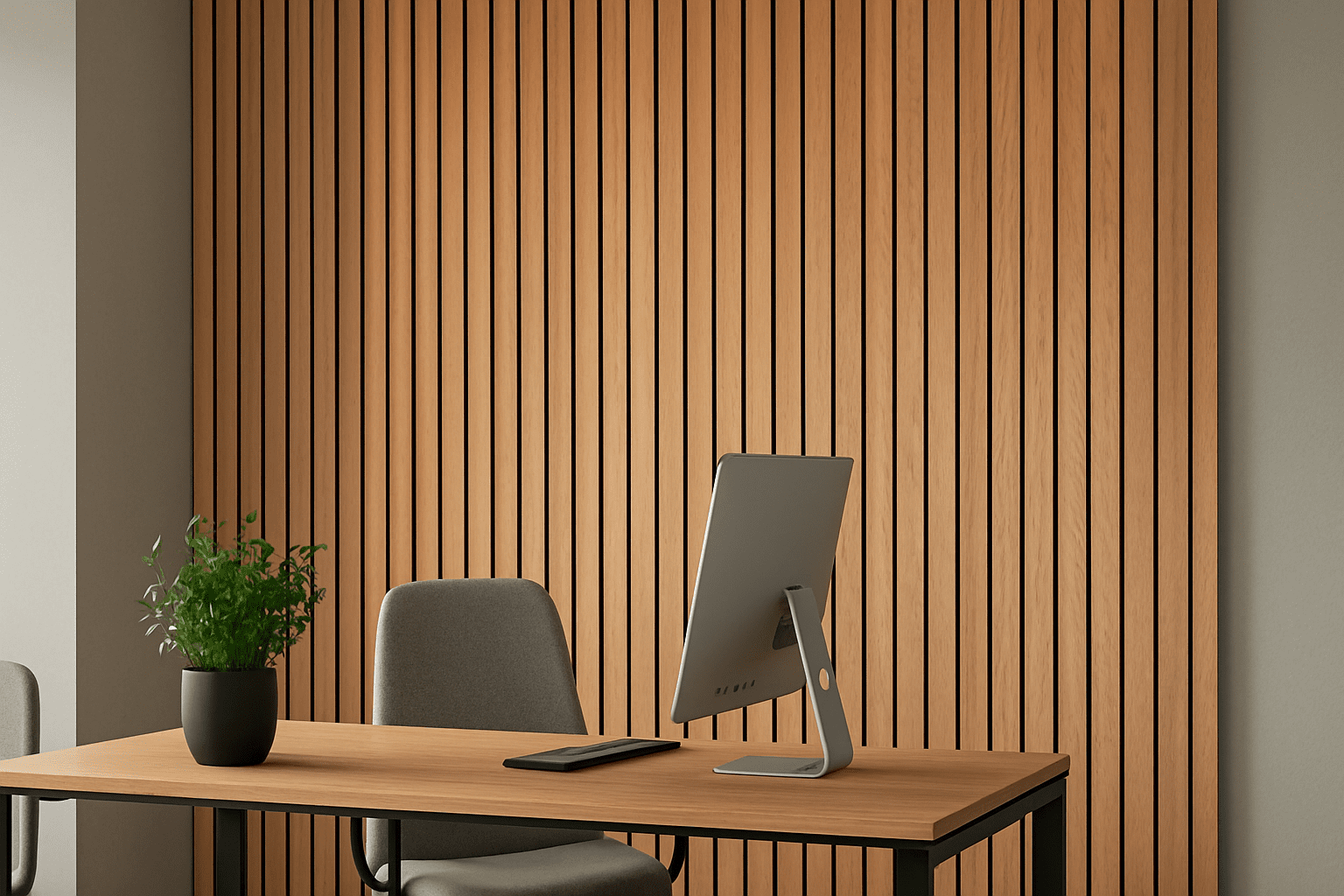When it comes to large-scale construction and heavy-duty interior projects — whether they are corporate spaces, auditoriums, educational institutes, or luxury hospitality — the importance of acoustic performance can never be overlooked. Sound management is no longer a luxury but a critical part of project design, directly affecting comfort, functionality, and user experience. Among various sound absorption materials available in the market, Wooden Acoustic Panels stand out as the most reliable and aesthetically pleasing solution for heavy-duty projects.
In this detailed study, we will explore why Wooden Acoustic Panels are considered superior, their unique benefits, and how they elevate modern architecture and construction.
The Strength of Natural Material
Wood has been a preferred construction material for centuries due to its natural strength, resilience, and versatility. When engineered into Wooden Acoustic Panels, these innate characteristics are further enhanced with modern manufacturing techniques. These panels are typically created with high-density cores, laminated surfaces, and specially designed perforations or slats that maximize sound absorption and diffusion.
One of the key reasons Wooden Acoustic Panels excel in heavy-duty projects is their structural stability. Unlike many synthetic materials that degrade, warp, or lose effectiveness under intense use or fluctuating environmental conditions, wood maintains its dimensional stability and strength. Properly treated and installed, it resists impact damage, scratches, and even minor moisture exposure much better than many alternatives.
Why Wooden Acoustic Panels are the Most Reliable for Heavy Duty Projects?
1. Exceptional Sound Absorption
Heavy-duty environments like convention centers, transportation hubs, or educational campuses require sound control on a large scale. Wooden Acoustic Panels excel at this. With a high Noise Reduction Coefficient (NRC) rating, they effectively trap and dissipate sound waves, preventing unwanted echoes and disturbances.
Unlike traditional soundproofing materials, wood-based panels offer a broader frequency absorption range, making them ideal for spaces with varied sound profiles.
2. Strength and Durability
Durability is critical for heavy-duty projects where wear and tear is inevitable. Wooden Acoustic Panels are robust and designed to withstand physical impacts, environmental changes, and daily operations without significant degradation. Treated hardwoods and engineered wood composites ensure the panels retain their structural integrity and performance over the years, making them a long-term investment.
3. Sustainable and Eco-Friendly
Today’s construction industry emphasizes sustainability. Wooden Acoustic Panels align well with green building standards like LEED and WELL certification. Many manufacturers use responsibly sourced wood and eco-friendly manufacturing processes. Some panels also incorporate recycled wood fibers, enhancing their eco-credentials.
Moreover, wood, being a natural material, has a lower carbon footprint compared to synthetic alternatives like plastic-based panels.
4. Aesthetic Appeal
One of the unmatched qualities of Wooden Acoustic Panels is their natural beauty. They offer a richness, warmth, and elegance that synthetic materials simply cannot replicate. Available in a variety of finishes, grains, and stains, these panels blend seamlessly with a wide range of architectural styles — from modern minimalist to traditional grandeur.
Customizable options allow designers to create unique patterns, grooves, or perforations, adding not just functionality but also visual artistry to a space.
5. Versatility in Application
Heavy-duty projects vary widely — from educational spaces requiring clear speech intelligibility to performing arts theaters needing perfect acoustics for music and drama. Wooden Acoustic Panels come in various forms including slatted panels, perforated sheets, grooved designs, and even 3D sculptures to meet the diverse acoustic and aesthetic needs of different environments.
They can be used for:
- Ceilings
- Walls
- Partitioning
- Decorative acoustic features
This flexibility makes them one of the most adaptive acoustic materials available.
Unique Features of Wooden Acoustic Solutions

Apart from the commonly known advantages, Wooden Acoustic Panels also bring unique features that are particularly valuable for heavy-duty projects:
- Fire Resistance: Special treatments can make wooden panels highly fire-resistant, meeting stringent fire codes and ensuring occupant safety.
- Humidity and Moisture Control: Advanced finishing technologies allow wood to maintain its performance even in areas with variable humidity levels, preventing warping or swelling.
- Impact Resistance: With solid-core construction, these panels can handle impacts from moving equipment or high-traffic areas without losing their aesthetic or acoustic properties.
- Customization with CNC Cutting: Advanced manufacturing techniques like CNC routing allow for highly intricate designs, offering architects limitless creative possibilities.
- Integration with Technology: Modern Wooden Acoustic Panels can be designed to incorporate HVAC systems, lighting, and audiovisual installations without compromising aesthetics or performance.
Innovations Driving Wooden Acoustic Panels Forward
Recent technological innovations are pushing the performance of Wooden Acoustic Panels even further:
- Micro-perforated Panels: Tiny, almost invisible holes enhance sound absorption while maintaining a smooth, clean surface.
- Composite Wood Materials: Blending natural wood with high-performance composites to create panels with superior fire ratings, impact resistance, and acoustic properties.
- Nano-coatings: Protective nano-coatings improve moisture resistance, antimicrobial properties, and easy maintenance, making Wooden Acoustic Panels even more suited for healthcare, hospitality, and educational facilities.
Conclusion
When architects, contractors, and designers undertake heavy-duty projects, their material choices must balance performance, longevity, aesthetics, and sustainability. Wooden Acoustic Panels meet and exceed these expectations. They offer high-level acoustic control, structural resilience, sustainable properties, and a timeless elegance that few other materials can provide.
As heavy-duty projects grow in scale and complexity, Wooden Acoustic Panels will continue to be the first choice for creating functional, beautiful, and acoustically optimized spaces. Investing in quality wooden acoustic solutions is not just a matter of meeting today’s needs — it’s a commitment to creating environments that perform exceptionally for decades to come.

